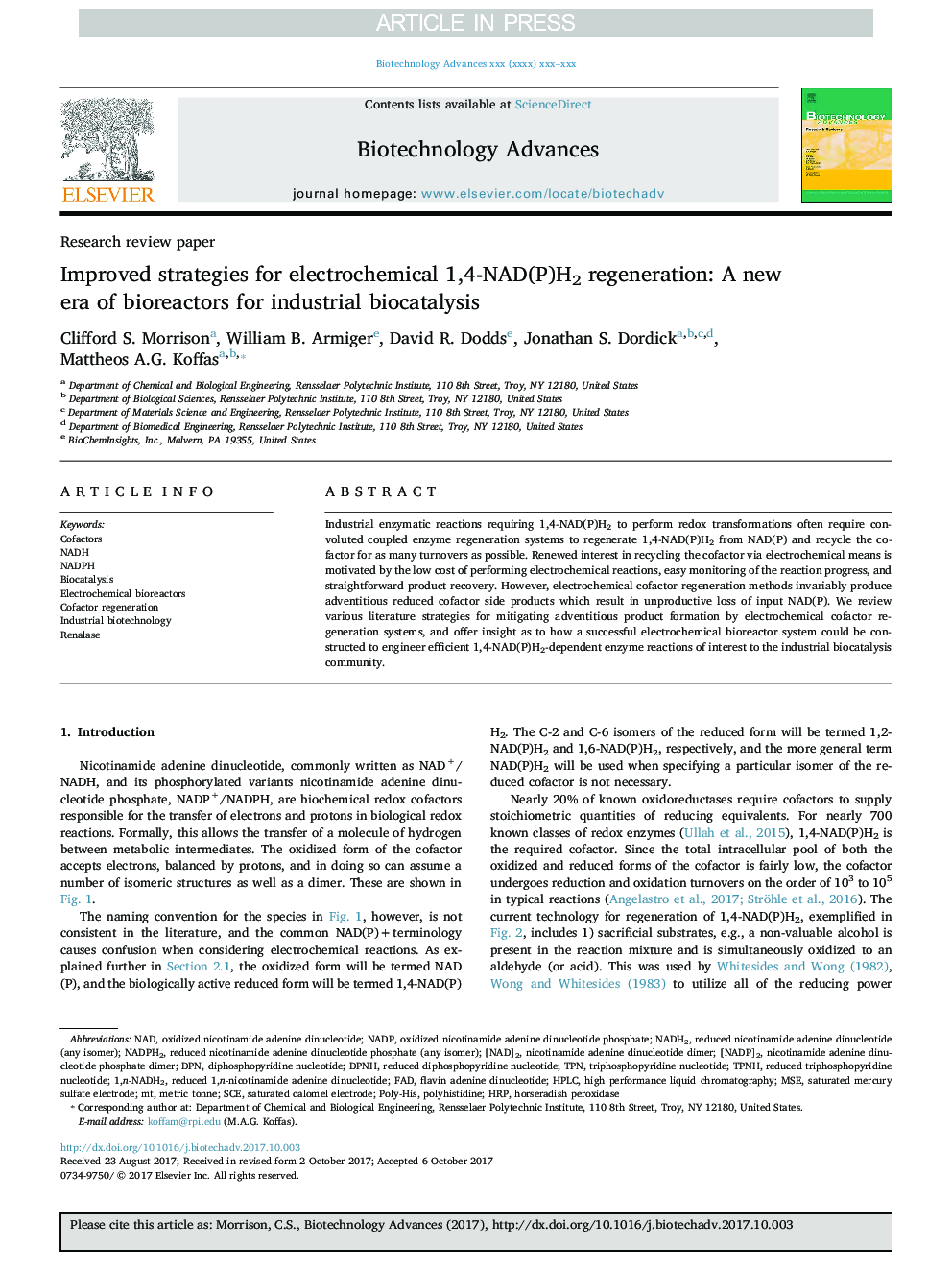| Article ID | Journal | Published Year | Pages | File Type |
|---|---|---|---|---|
| 6486674 | Biotechnology Advances | 2018 | 12 Pages |
Abstract
Industrial enzymatic reactions requiring 1,4-NAD(P)H2 to perform redox transformations often require convoluted coupled enzyme regeneration systems to regenerate 1,4-NAD(P)H2 from NAD(P) and recycle the cofactor for as many turnovers as possible. Renewed interest in recycling the cofactor via electrochemical means is motivated by the low cost of performing electrochemical reactions, easy monitoring of the reaction progress, and straightforward product recovery. However, electrochemical cofactor regeneration methods invariably produce adventitious reduced cofactor side products which result in unproductive loss of input NAD(P). We review various literature strategies for mitigating adventitious product formation by electrochemical cofactor regeneration systems, and offer insight as to how a successful electrochemical bioreactor system could be constructed to engineer efficient 1,4-NAD(P)H2-dependent enzyme reactions of interest to the industrial biocatalysis community.
Keywords
HRPNADPH2NADH2TPNDPNMSENADPHNADPSCEBiocatalysisflavin adenine dinucleotideSaturated Calomel Electrodeoxidized nicotinamide adenine dinucleotide phosphateoxidized nicotinamide adenine dinucleotideCofactor regenerationFADIndustrial biotechnologymetric tonneNADHNADcofactorsHorseradish peroxidasePolyhistidinehigh performance liquid chromatographyHPLCRenalase
Related Topics
Physical Sciences and Engineering
Chemical Engineering
Bioengineering
Authors
Clifford S. Morrison, William B. Armiger, David R. Dodds, Jonathan S. Dordick, Mattheos A.G. Koffas,
